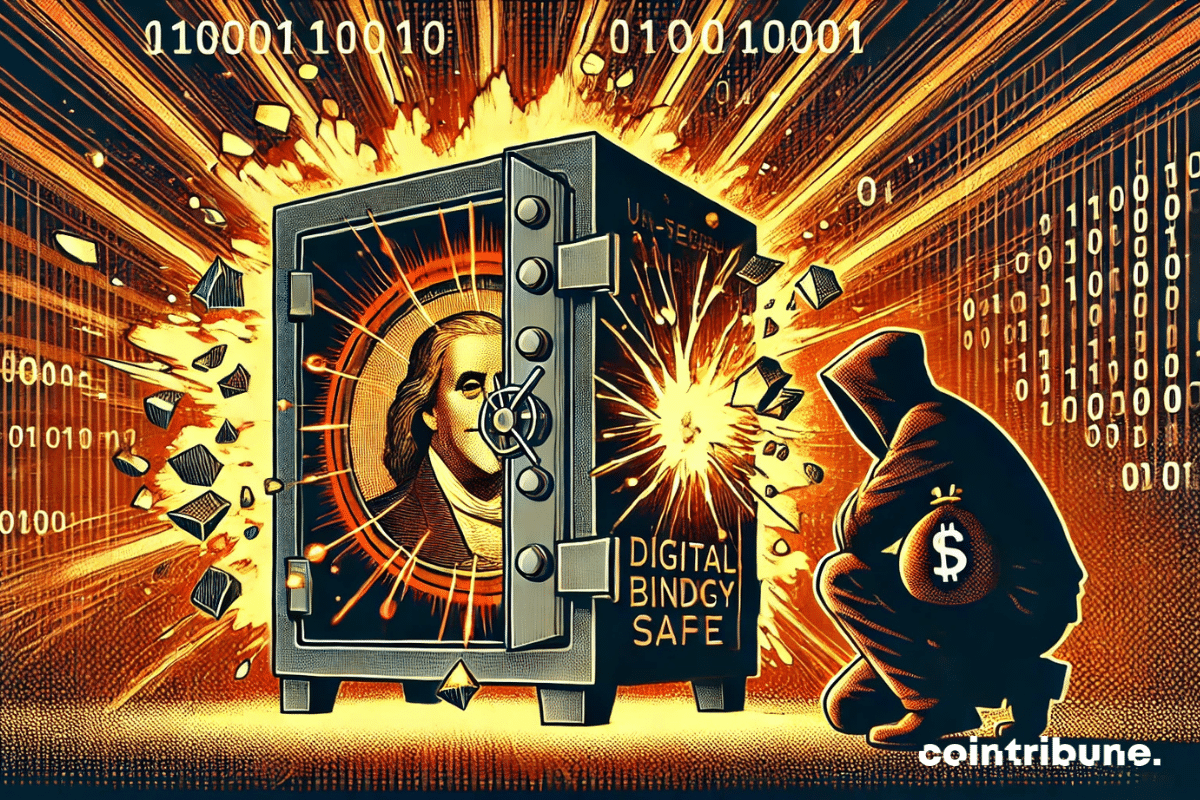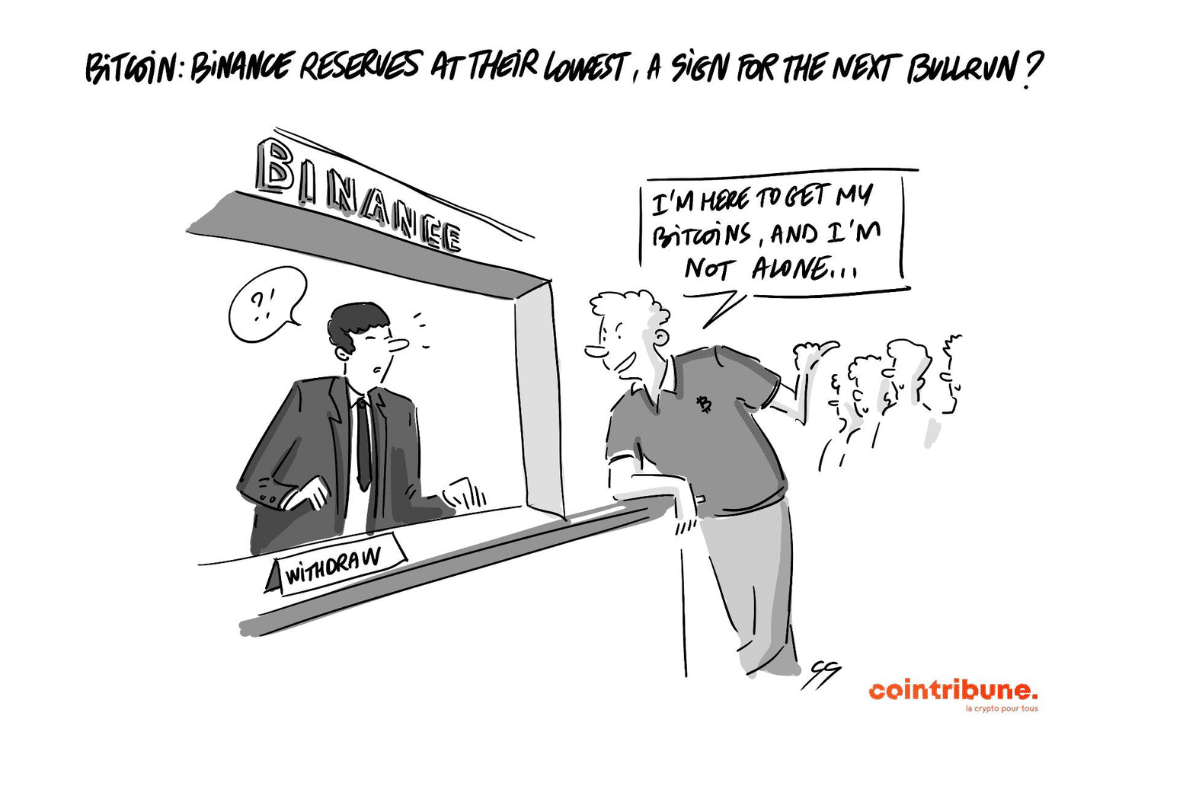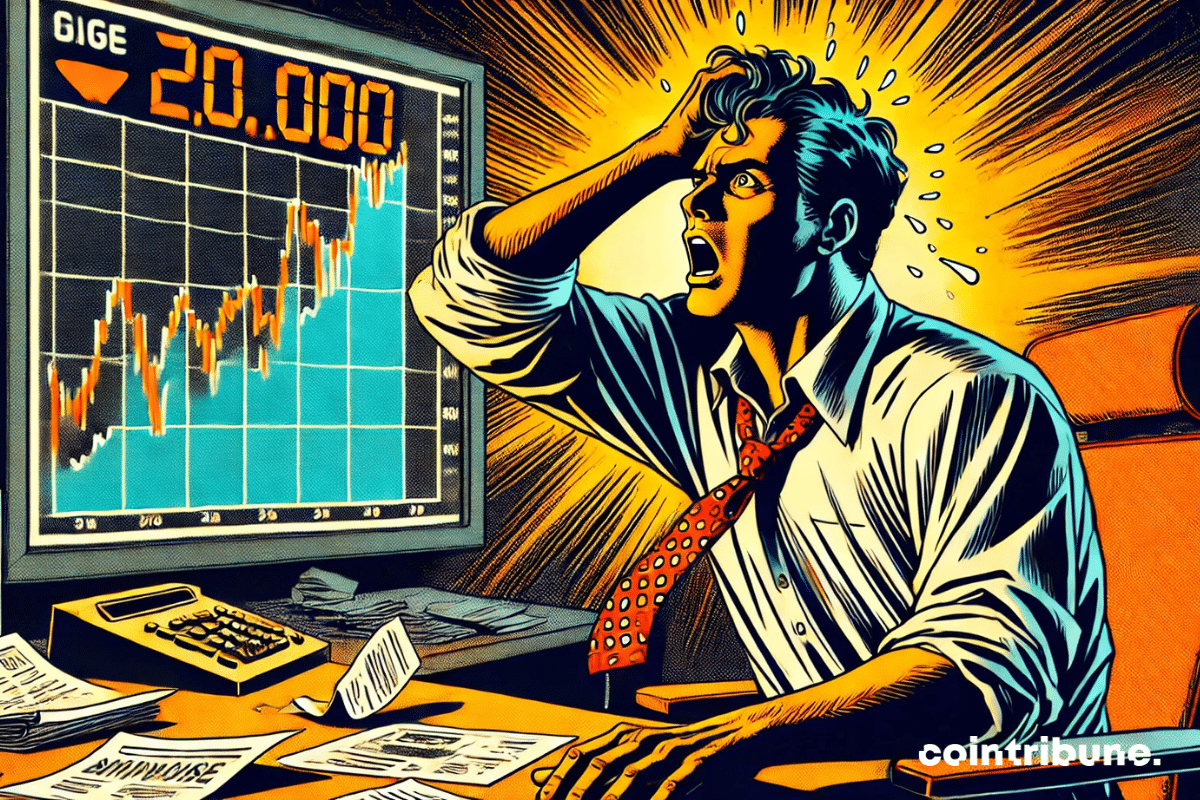After ten years of waiting, miners are regaining power thanks to the Stratum V2 update.
Article long
The mining of bitcoins (BTC) is the process that allows new units of BTC to be generated. It consists of solving complex mathematical problems using powerful computers to add blocks to the blockchain. Miners who manage to find the solution first are rewarded in BTC. This allows them to make a profit on their investment, making mining an interesting opportunity. If you want to start mining bitcoins, you need to have specialized equipment. Discover in this article what materials you need to effectively start this activity.
In 2024, cryptocurrencies reached a significant milestone with their increasing integration into global financial systems. This year was marked by major initiatives driven by ambitious regulations and large-scale strategic projects. In the United States, the potential adoption of the Bitcoin Act paved the way for discussions on the role of cryptocurrencies in economic sovereignty. In Europe, the MiCA regulatory framework established unprecedented rules to stabilize markets and protect investors. At the same time, Latin America emerged as a key player, with innovative partnerships like that of El Salvador and Argentina, consolidating their position in the face of local economic challenges. These advancements reflect a global movement in favor of the adoption of these assets and outline a new trajectory for the crypto industry and its future implications.
The idea that a central bank could hold bitcoin may seem like science fiction to some, but in Switzerland, this perspective is gradually becoming a reality. Indeed, the country is considering an amendment to its federal constitution to allow the Swiss National Bank (SNB) to integrate bitcoin into its reserves, alongside gold. This initiative, led by a group of crypto advocates, reflects a desire to incorporate Switzerland into a modern and forward-looking financial dynamic.
The world of crypto is set to experience a decisive year, driven by promising innovations and growing threats. Indeed, the potential approval of an ETF based on Solana could mark a significant advancement, providing institutional investors with new access to cryptocurrencies. Meanwhile, the rapid progress of artificial intelligence is redefining trading practices, while similar technologies fuel unprecedented cyberattacks. In this context of upheaval, 2025 stands out as a pivotal year for the industry, where the promises of increased adoption must contend with increasingly complex security risks.
Bitcoin is Donald Trump's plan B if he fails to persuade the BRICS to stop their rebellion against the dollar.
Elon Musk has engaged in a public battle to defend H1-B visas. The billionaire, despite being a prominent figure of the conservative movement, now fervently asserts that these visas are "essential for America to keep winning."
The year 2024 will go down in history as a decisive milestone for Nvidia, an emblematic figure of technological innovation in the era of artificial intelligence. Thanks to visionary investments and strategic advances, the company has reached an unprecedented market capitalization of $3 trillion, consolidating its role as a global leader. This success largely relies on its chips, which equip leading global data centers, and on its CUDA ecosystem, favored by developers. However, this triumph comes with increasing challenges. The rise of ambitious competitors, such as AMD and Broadcom, intensifies the pressure. Moreover, key clients, including Google and Amazon, are actively exploring alternatives to reduce their reliance on Nvidia. These contrasting dynamics place the company at a strategic turning point, where the slightest misstep could redefine the balance of power in the market.
The digital world has become the new battleground for international powers, where each attack can have profound and lasting repercussions. Recently, a major cyberattack struck the systems of the U.S. Treasury, revealing the vulnerability of the technological infrastructures of a state renowned for its defensive capabilities. This incident occurs in the context of intense rivalry between the United States and China, as Washington accuses presumed hackers backed by Beijing of being behind the intrusion. For its part, China firmly rejects these accusations, labeling them as unfounded and denouncing a smear campaign orchestrated by U.S. authorities. More than just a mere digital incident, this case sheds light on the growing geopolitical tensions around cybersecurity and the difficulty of identifying those responsible in an increasingly interconnected world.
MicroStrategy's bold strategy in the bitcoin universe continues to attract attention, both for its scale and consistency. While the crypto market remains marked by pronounced volatility, the company, under the leadership of Michael Saylor, reiterates its firm commitment to the leading cryptocurrency. As the year comes to a close, it has once again surprised observers with a new massive purchase of bitcoin, further solidifying its position as an institutional leader in the field. This investment is part of a thoughtful approach aimed at strengthening its reserves, as well as asserting its driving role in the institutional adoption of cryptocurrencies. Such an acquisition, occurring in a context of global economic uncertainties, also illustrates the growing influence of companies on the evolution of the crypto ecosystem.
The BRICS have been presenting themselves for several years as a credible alternative to hegemonic economic blocs such as the G7. In this context of increasing rivalries among powers, Russia has taken steps to expand this alliance. It then invited Saudi Arabia and Turkey to join its ranks. Moscow hoped to strengthen the bloc's influence on the international stage and to face the pressures from Western economies. However, these efforts encountered a rejection. This setback illustrates the divergent interests among these nations, as well as the challenges that the BRICS face in expanding their circle of influence in a world where geopolitical balances are becoming increasingly complex.
In a world where technology is evolving at a breakneck pace, artificial intelligence (AI) and blockchain are emerging as pillars of innovation. Their convergence paves the way for profound transformations in key sectors such as finance, logistics, and entertainment. These advancements are attracting growing interest from investors and developers, who are always on the lookout for disruptive solutions. Currently, several AI-based cryptocurrencies, notably TAO, FET, and Render, have dominated the rankings of the most active projects on social media. Such a trend, illuminated by data from LunarCrush, illustrates their growing popularity as well as the impact of these technologies on the blockchain ecosystem. These projects, thanks to their ability to generate massive interactions, reflect a positive dynamic that could redefine priorities within the crypto industry.
Bitcoin is Donald Trump's plan B if he fails to persuade the BRICS to stop their rebellion against the dollar.
The crypto market is experiencing a period of uncertainty marked by macroeconomic fluctuations. Nevertheless, Ripple (XRP) stands out with relative stability. Its price moves within a key range, between $2 and $3, which captures investors' attention. This status quo, reinforced by low volatility and mixed technical signals, reflects a fragile balance between buyers and sellers. At this stage, observers are questioning: is this consolidation the prelude to a significant break? The next developments could indeed determine the future of XRP, whether it leads to a bullish momentum towards new heights or a strategic pullback to lower support levels.
Amid revolutionary announcements, technological advancements, and regulatory turmoil, the crypto ecosystem continues to prove that it is both a territory of limitless innovations and a battleground for regulatory and economic challenges. Here is a summary of the most significant news from the past week regarding Bitcoin, Ethereum, Binance, Solana, and Ripple.
The year 2024 marks a major shift for the French real estate market. Indeed, the dynamics that have structured this sector for decades are gradually fading, giving way to profound changes. The massive decline in transactions, the hesitant restart of real estate purchasing power, and the growing importance of energy criteria are reshaping the priorities of buyers and sellers. These transformations go beyond the numbers: they reflect the cumulative impacts of the crisis that began in 2022 and economic uncertainties. Through their 2024 Real Estate Report, the Notaries of France shed light on these contrasting developments. Their analysis goes beyond mere observation. It explores short-term perspectives and opens pathways for a potential recovery in 2025. These projections illuminate immediate challenges, as well as the necessary adaptations to face a market in full transformation.
As the inauguration of Donald Trump approaches on January 20, 2025, observers are closely examining his economic policies, particularly their potential impact on bitcoin. According to Ki Young Ju, founder of CryptoQuant, Trump's policies may depend on the balance between dollar supremacy and the opportunities presented by cryptocurrencies. This analysis sheds light on the issues related to the hegemony of the dollar, which continues to dominate global trade despite losing over 90% of its value since 1913. While some countries are adopting digital solutions to escape monetary crises, such as the rise of stablecoins in emerging economies, the role of bitcoin remains ambiguous. This topic, at the intersection of traditional finance and disruptive technologies, raises questions about the future of cryptocurrencies in an economic system where U.S. policies still influence the rest of the world.
In a global economic context marked by successive upheavals, few sectors manage to maintain enduring stability. Long perceived as an unsinkable fortress, luxury, the quintessential symbol of prosperity and exclusivity, also faltered in 2024. Indeed, the fortunes of emblematic figures such as Bernard Arnault, Françoise Bettencourt Meyers, and François Pinault suffered colossal losses amounting to over 70 billion dollars combined. Such a decline finds its origins in a set of closely related factors: a slowing Chinese economy, national political tensions, and increased volatility in stock markets. These combined elements have shaken the pillars of the sector, revealing an unexpected fragility.
The US dollar is establishing itself as the leading currency of 2024, dominating the foreign exchange market without competition. While many global economies face challenges such as rapid inflation and geopolitical uncertainties, the greenback is showing its best performance in nearly a decade. This remarkable progress is based on several solid pillars: a robust US economy, attractive bond yields, and a monetary policy skillfully orchestrated by the Federal Reserve. Additionally, there is a global context characterized by the weakening of competing currencies, such as the yen and the euro, which are unable to compete with the supremacy of the dollar. This rise reflects the resilience of the United States but also highlights the economic fractures shaking the rest of the world.
The European Union stands on the brink of a historic change with the impending implementation of the MiCA regulation (Markets in Crypto-Assets), aimed at regulating cryptocurrencies and enhancing transparency in the market. Among the many implications of this regulation, the fate of the USDT stablecoin, issued by Tether, raises significant questions. This token, which holds a central position in crypto transactions worldwide, could be banned or restricted in Europe if authorities deem it does not meet MiCA's requirements. However, as the deadline of December 30, 2024 approaches, no clear directive has been communicated. This situation has led to varied responses among major exchange platforms. For instance, Coinbase has taken the lead by removing USDT from its European services and opts for a conservative approach in the face of regulatory uncertainties. Conversely, major players like Binance and Crypto.com keep the stablecoin accessible, as they bet on future clarifications. This climate of ambiguity reflects the scale of the challenges posed by implementing MiCA and highlights the need for a harmonized framework to avoid disrupting a rapidly growing sector.
After a period marked by intense fluctuations, Bitcoin seems ready to enter a new decisive phase. Recent data from Binance reveals a steady increase in purchase volumes, a strong signal that fuels hopes for an imminent rebound. This trend comes as the market digests the corrections that occurred after the historical peaks reached this year. In a context where investors' attention remains focused on key indicators, the latest developments confirm the growing interest in the flagship cryptocurrency, reinforcing the idea of an imminent recovery. While these numbers reflect increased buying pressure, they also fit into an economic landscape where signals of recovery alternate with the risks of future corrections. This setup makes Bitcoin a central player in discussions about the outlook for digital markets in 2025.
The BRICS are ushering in a new economic era with a historic expansion planned for January 2025. This group, which unites some of the largest emerging economies, is set to welcome nine new partners, marking a decisive step in its quest for strengthening its position on the international stage. Such a move comes at a time when geopolitical rivalries are intensifying and traditional alliances are being questioned. Through the extension of their geographical and strategic reach, the BRICS aim to consolidate their influence, but also to provide a credible alternative to Western-dominated economic models. This shift reflects a reorganization of global economic powers, in response to growing demands for a more balanced and multipolar system.
At the dawn of 2025, Ethereum is poised to undergo a major transformation that could redefine its role within the crypto ecosystem. Following a lackluster performance in 2024, the signs of a resurgence are intensifying. Experts emphasize the decisive impact of several technical innovations and a rapidly evolving regulatory context, all of which could propel Ethereum into a new era of dominance. Driven by ambitious updates like Pectra, the network aims to overcome its current scalability limitations and enhance user experience through advancements in interoperability and account abstraction. Additionally, the arrival of a pro-crypto administration in the United States, along with the growing adoption of stablecoins, tokenization, and AI-based smart agents, opens up unprecedented opportunities. In this context, Ethereum could become the central engine of a rapidly changing ecosystem that attracts investors, institutions, and developers.
Global economic uncertainties are forcing institutions to thoroughly rethink their investment strategies. In this context, decentralized finance (DeFi) is emerging as a credible and visionary alternative for reinventing traditional financial models. In recent years, major advancements have transformed DeFi into a sophisticated ecosystem, far beyond early technological experiments. Thus, the development of bitcoin staking, the tokenization of real assets, and the integration of autonomous artificial intelligences herald a new era for this rapidly expanding sector.
China is at a pivotal economic turning point. As the combined effects of weak consumption, an intensified real estate crisis, and high unemployment hinder its development, Beijing has just announced an ambitious budget policy for 2025. The stated objective is clear: to stimulate domestic demand and stabilize an economy under significant pressure. To achieve these ambitions, the government plans a significant increase in public spending, coupled with a revision of its fiscal priorities. These measures, detailed during a national conference, reflect a firm commitment to support local communities, expand social benefits, and strengthen resources for struggling businesses. Such a strategy, centered around innovation and strategic technologies, also aims to revitalize trade exchanges in order to adapt debt rules. With this comprehensive approach, Beijing intends to lay the groundwork for more resilient economic growth and to address the structural challenges that hinder its trajectory.
The crypto market, characterized by sustained volatility, continues to surprise with the failure of predictions. While massive sell-offs have dominated trading in recent days, a report published by CoinShares highlights a singular phenomenon: institutional investors have significantly increased their positions in crypto products. Indeed, with net inflows reaching $308 million in a week, these investments sharply contrast with the general downward trend. This institutional support, although counterintuitive in an environment of strong economic pressure, reflects a strategic confidence in the potential of cryptos. Concurrently, the data reveals marked divergences among products, reflecting a reconfiguration of investment priorities. This dynamic paves the way for an in-depth analysis of the motivations of institutions and their implications for the future of crypto markets.
The world of crypto could experience a historic change with Donald Trump's return to the White House. Indeed, the elected president, already known for his divisive stances, has placed crypto at the heart of his economic priorities. He aims to propel the United States to the status of a global leader in this rapidly expanding sector. Among his promises are the creation of a strategic reserve of bitcoins and the establishment of policies favorable to crypto businesses. These initiatives, which demonstrate a desire for a break from the previous administration, evoke a mix of hope and skepticism within the industry. While his supporters praise a bold vision for the future of crypto, observers remind us of the many obstacles that will arise in the realization of these projects, whether political, economic, or regulatory. Donald Trump's next term could thus mark a decisive turning point in the evolution of cryptocurrencies in the United States and on the international stage.
As the year comes to a close, the bitcoin market finds itself at a decisive stage. Investors were hoping for a period of stability to end 2024 on a positive note after a series of significant fluctuations. However, several major technical indicators are countering these expectations and pointing towards a possible significant correction. Among these signals, the formation of a bearish pattern on the weekly charts and the erosion of critical support levels are raising serious concerns. Concurrently, macroeconomic conditions, marked by a decline in global money supply and a tightening of policies by the U.S. Federal Reserve, are increasing pressure on risk assets. These combined elements are fueling the most pessimistic projections. Thus, some observers even suggest that the price of bitcoin could drop by $20,000. A thorough analysis of these dynamics reveals both the challenges and the opportunities of a market in search of new certainties.
International economic dynamics always attract marked interest, particularly when coalitions like the BRICS are perceived as a threat to the hegemony of the American dollar. However, the recent statements from Russia, India, and South Africa have clarified their position. Indeed, these countries assert that no plan aims to weaken the American currency. They firmly reject the accusations of "de-dollarization" and emphasize their willingness to maintain stable relations with the United States.
Since its launch, Solana has distinguished itself as one of the most innovative blockchains in the industry. With its execution speed and some of the lowest transaction fees, it has attracted a dynamic ecosystem of developers and users. However, December 2024 marked a critical period. The Total Value Locked (TVL) in its DeFi ecosystem recorded a dramatic drop of $1.1 billion, reaching a critical level of $8.01 billion. This decline reflects weakened activity on the blockchain, as evidenced by a 7% decrease in the number of daily active addresses. At the same time, network revenues also fell by 24%, intensifying concerns about the sustainability and attractiveness of this leading platform. These numbers raise questions about Solana's ability to maintain its position in an increasingly competitive environment.




























